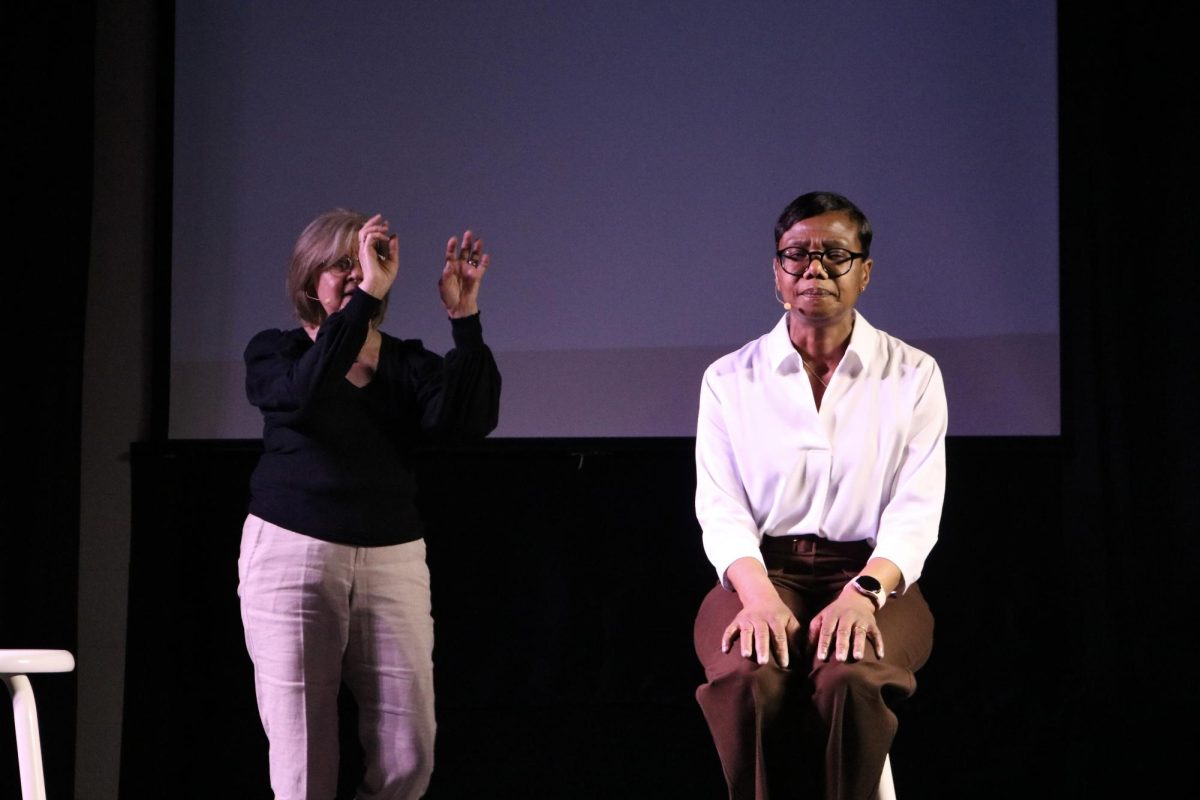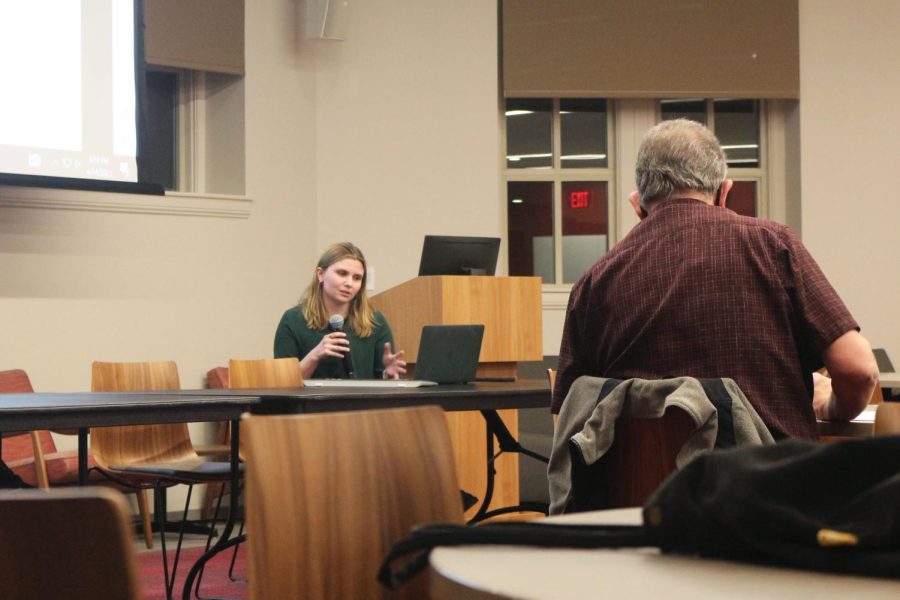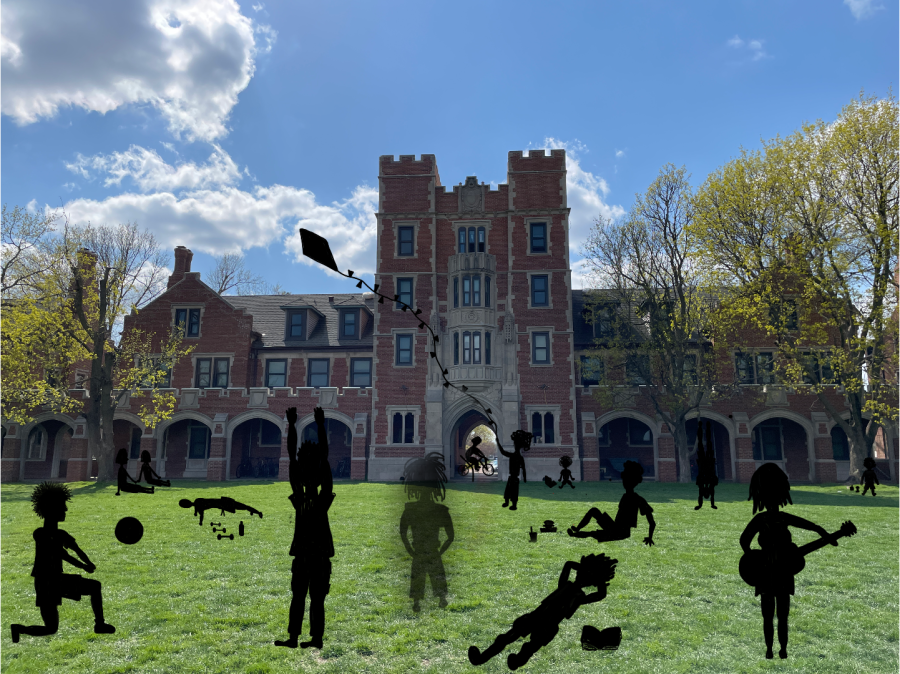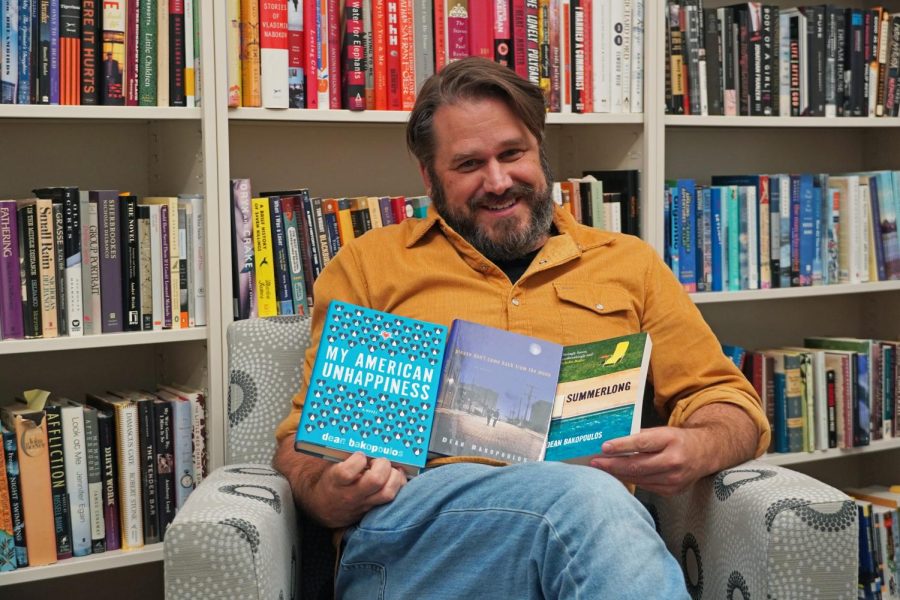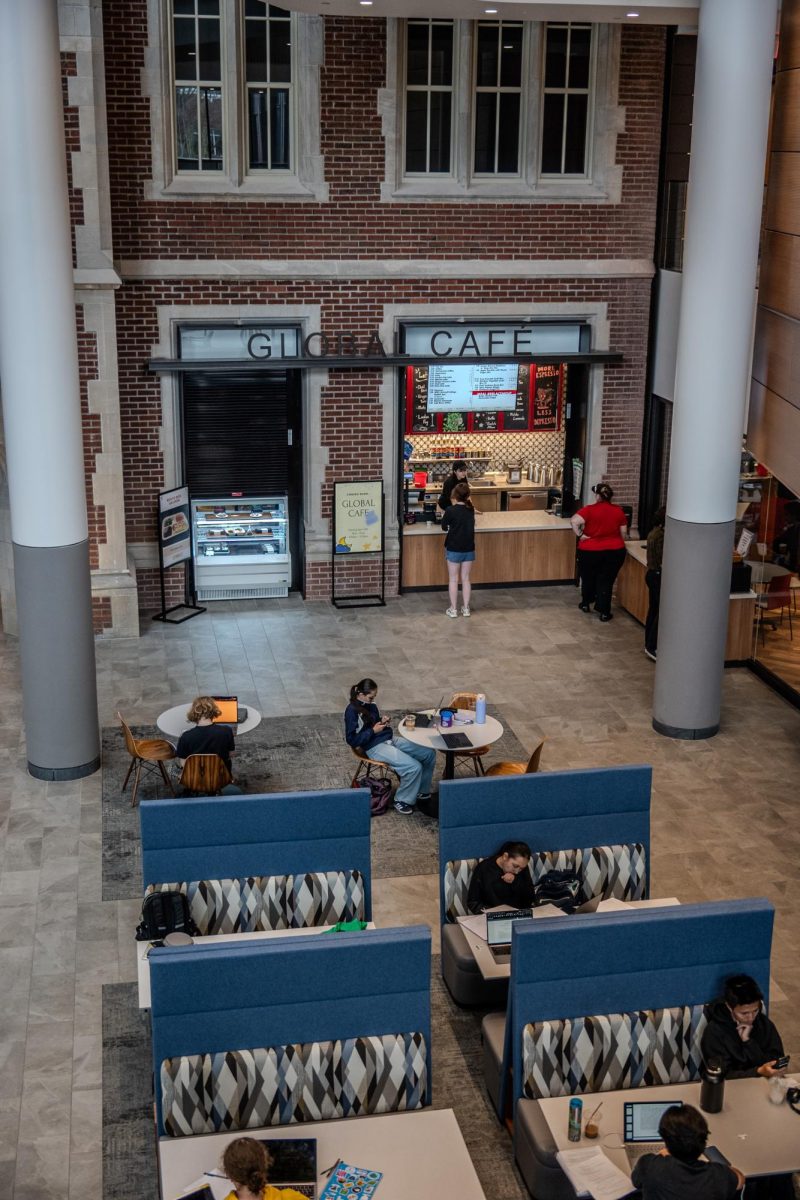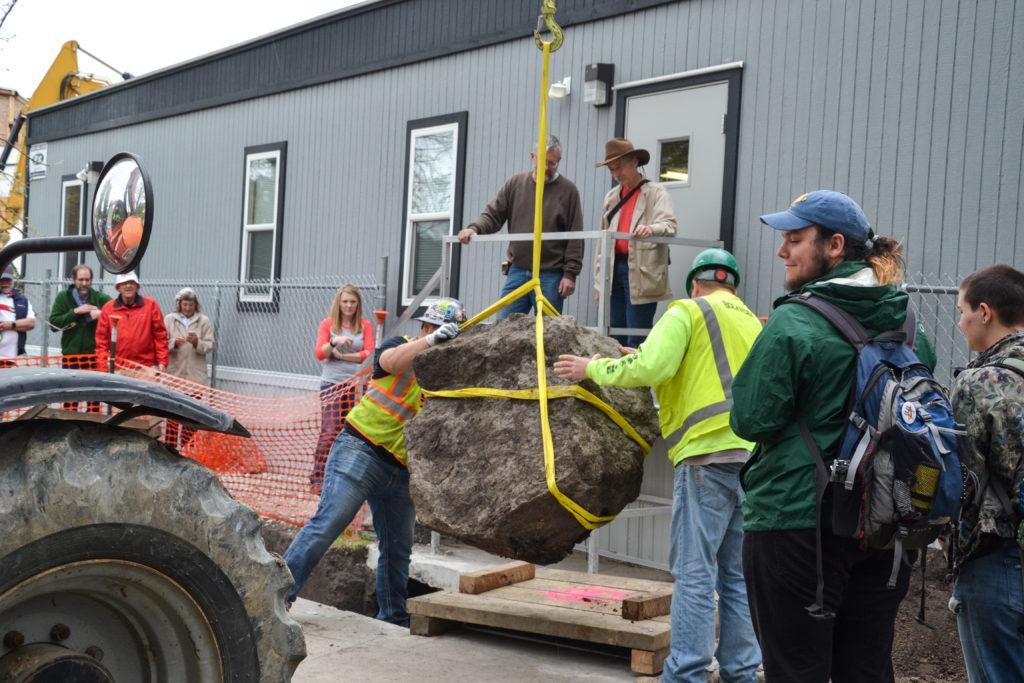
On April 25, 1914, a gang of students reportedly snuck out into the dead of night to finally finish the job they had been trying in vain to accomplish — to rid campus of the “Peace Rock.” Angered over the suspension of the campus “scrap,” these students wanted to eliminate the symbol of the tradition’s destruction, and on that night they laid the rock to rest in a hole on the campus’s southwest lawn.
And there the rock rested for 103 years. However, after its long absence, the Peace Rock has finally been brought back up. On Tuesday, which was the anniversary of the burial of the rock, John Whittaker, anthropology, and local historian Byron Hueftle-Worley presided over a brief ceremony to welcome the rock back to the surface.
“I want to thank all the many people who made this possible, and it’s mainly Byron’s fault,” quipped Whittaker. “He did all the research and got me interested.”
Whittaker went on to thank the McGough construction company, the administration, his fellow faculty members and of course, the students who helped him unearth the historical rock. During the three-week dig, students from Whittaker’s Archeology Methods class, as well as some interested passersby, formed Whittaker’s excavation team. While the archaeological process does take longer than a backyard dig, Whittaker expressed how impressed he was with the original team of students who buried the large boulder.
“I want to have some students get their hands on the rock and see how many of them it takes to move the thing,” Whittaker said.
Although the Peace Rock is now out of the ground and rests on the sidewalk near its burial site, Whittaker said that more excavation of the site will still take place. Earlier in the process, the group stumbled upon a blank of the first mass-produced American military cartridge, probably from a drill conducted in the area. Whittaker hopes that a little more digging will reveal some equally interesting objects.
As for the rock itself, there are no concrete plans regarding it. Both Whittaker and Hueftle-Worley would like to see it remain a prominent part of our campus, and think that it could fit somewhere in the redevelopment of the ARH. They believe that the symbol has staying power, even though the “scrap” has long been lost in Grinnell’s collective memory.
“They called it the ‘Peace Rock’ because it meant peace between the classes for all time,” said Hueftle-Worle. “Remember, this is before World War I, World War II, Korea and Vietnam. We now think of a ‘Peace Rock’ and peace for all times in a little bit broader context than they were at the time. But maybe now that it’s here now, since we’ve changed our way of looking at it, we can rededicate it to peace in our time.”





